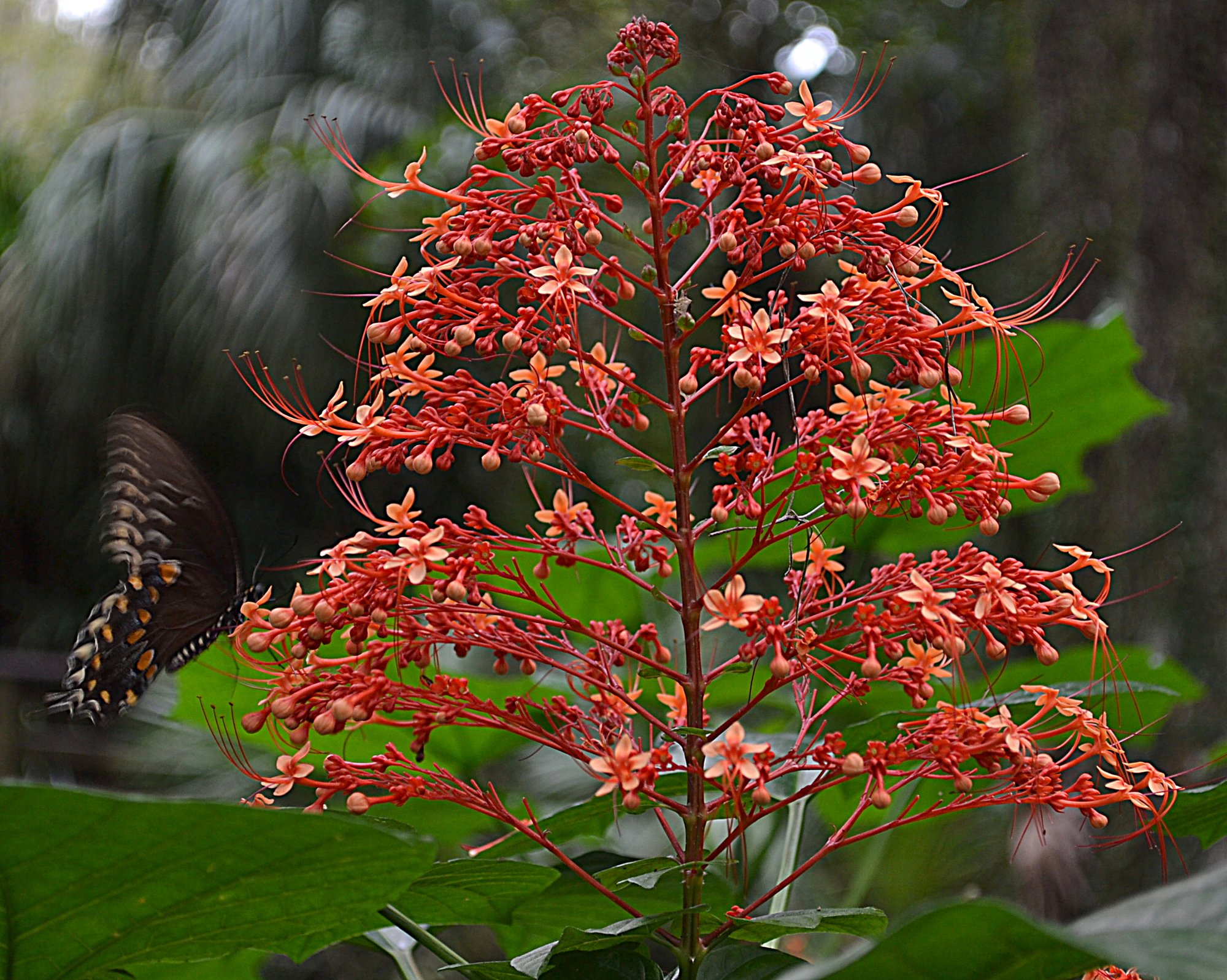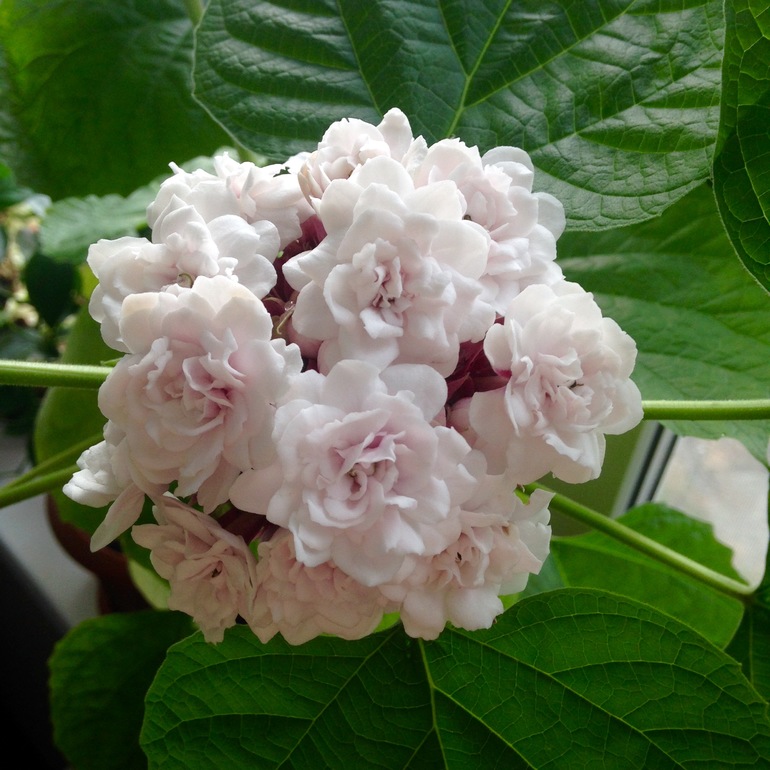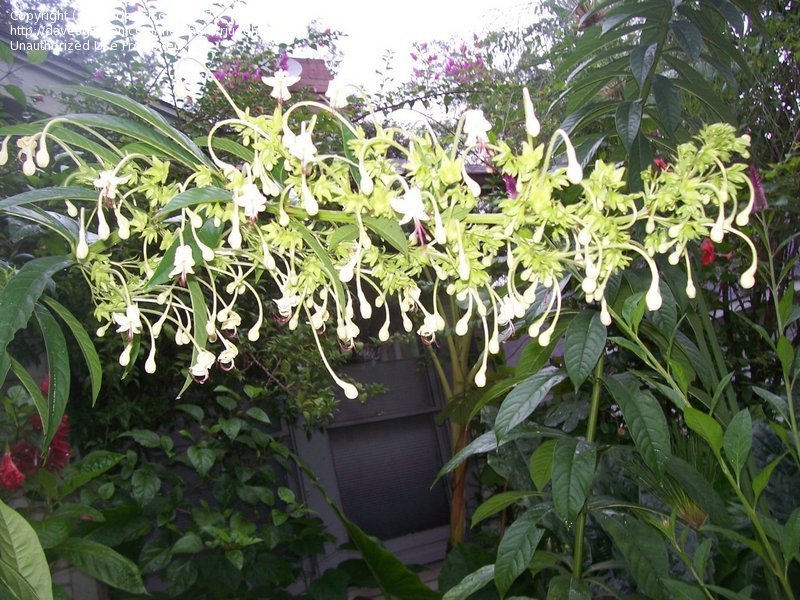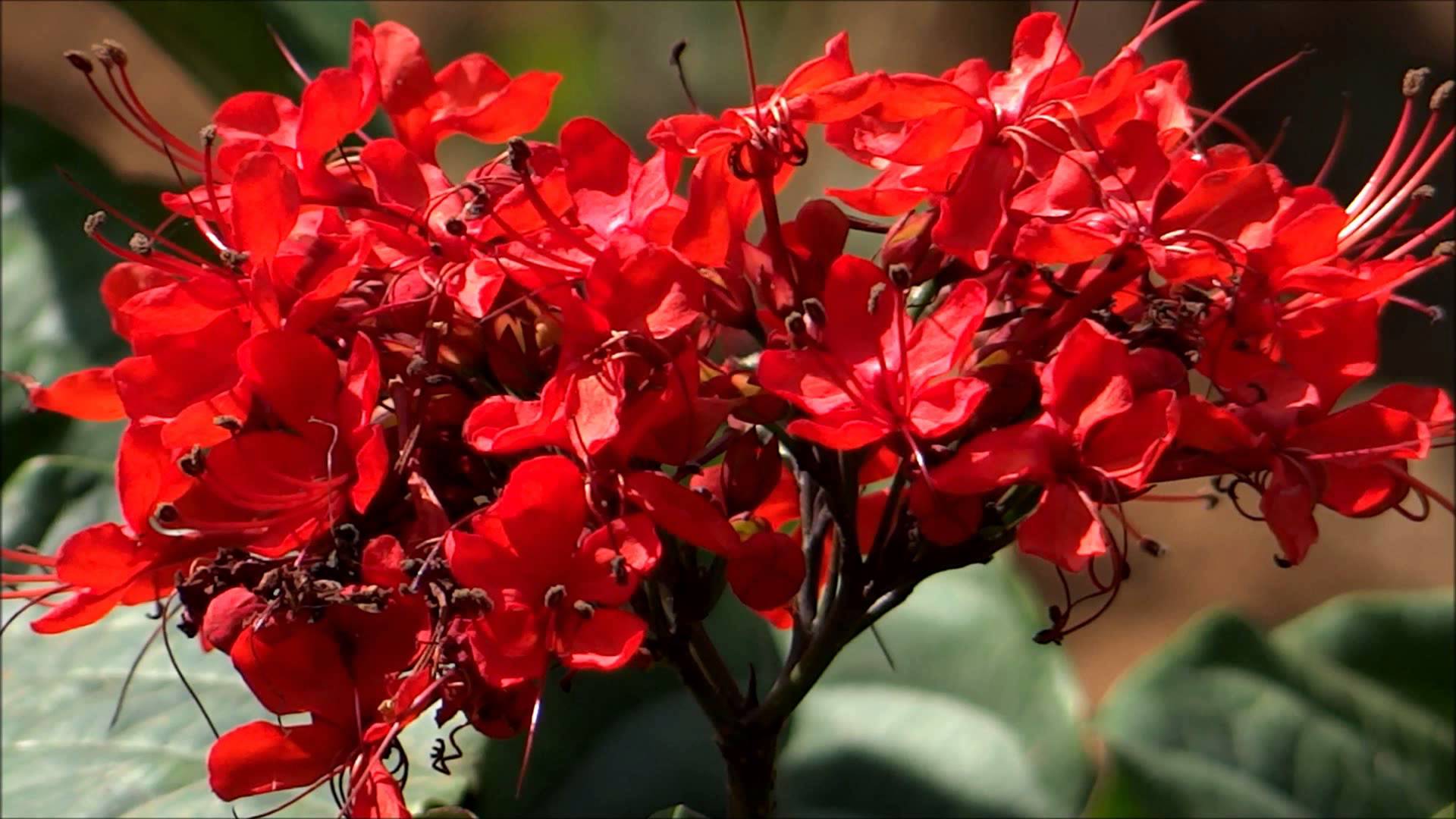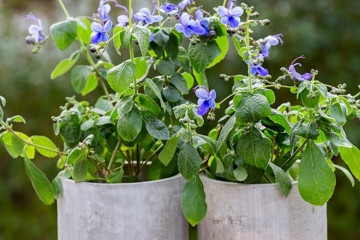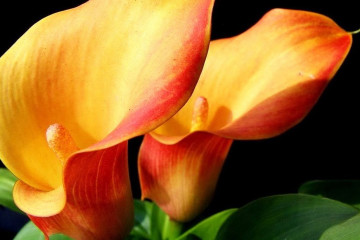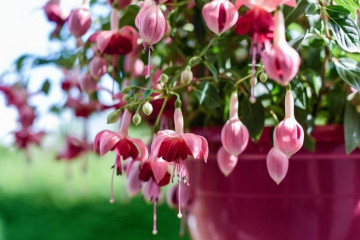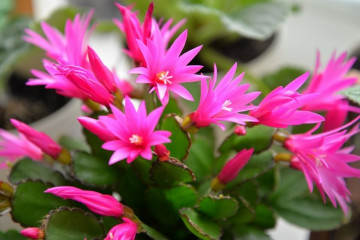Clerodendrum liana - varieties and varieties
Content:
- Characteristics of clerodendrum
- How to care
- Clerodendrum: species and varieties
- Pagoda (Clerodendrum Paniculatum)
- Bunge
- Filipino (Clerodendrum Philippinum)
- Mistress Thompson's Clerodendrum
- Clerodendrum Speciosissimum
- Clerodendrum variegated
- Clerodendrum Schmidt
- Clerodendrum Valichi (Prospero, Wallich)
- Clerodendrum Champagne Splash
- Clerodendrum Slendens (shiny)
- Clerodendrum Trichotomum
- Fragrant
Another name for this plant is the tree of fate. Clerodendrum blooms long and profusely. It is due to the unusual structure of the flower that it is called a bloody cross. Plant breeders prefer to call it volcameria. Due to its unusually bright appearance, it is often used in landscape design for the improvement of greenhouses, courtyards and front gardens. In addition, the plants take root very well in indoor conditions.
Characteristics of clerodendrum
Under natural conditions, it can be found in the tropics of Asia, Australia, as well as on the coastal zones of the islands of the Indian Ocean. The options can be very different: there are both shrubs and vines more than 4 m long.
According to the clerodendrum classification, plant species and varieties belong to the Yasnotkovy family. Deciduous forms of the plant are widespread, but shrub flowers can be found.
The shape of the stems varies. In rooms and greenhouses, vines are preferred for vertical gardening. The shrubs are short and, with proper planting and pruning, can be grown as a pretty flowering tree.
The leaves are smooth and have a typical tetrahedral shape. Arranged in pairs, opposite. The shape is different.
Clerodendrum can bloom for a long time, but only with proper care. Sometimes this period lasts from April to October before the onset of cold weather. The inflorescences have a characteristic appearance.
In the inflorescence itself there are several bell-shaped cups. The color of the petals can be not only white, but it always contrasts with the stamens.
The plant exudes a delicate fragrant aroma. Each variety and variety has its own, special.
How to care
The plant is unpretentious to the conditions of planting. It feels good both in the bright sun and in the shade. The wintering of volkameria is tolerated without problems. The main thing is to observe the temperature regime and a comfortable level of humidity. The temperature during this period should be within 15 ° C. It rests from flowering.
In order for clerodendrum to grow for a long time and please the eyes of its breeders, it is necessary to create conditions close to its natural ones. As you know, wild species grow in the tropics. Therefore, it is very important to maintain high humidity. Frequent watering is unlikely to contribute to this, so it is necessary to spray the leaves with clean water at room temperature as much as possible.
Clerodendrum: species and varieties
The differences between varieties can be significant. They are in the form of stems, leaves. Inflorescences and their shapes are another distinctive feature.
There are many species, from the common Clerodendrum Paniculatum to the rarer ones such as Clerodendrum Glabrum or Clerodendrum Akuleatum.
Pagoda (Clerodendrum Paniculatum)
It is also called a flower pagoda. The plant was brought from Central Asia. It got its name by no coincidence. The inflorescence has a clear pyramidal shape. Flowers in it are located at different levels, which makes it even more similar to a Buddhist temple - a pagoda.
The flowers are small but numerous. Funnel-shaped. Usually inflorescences of Clerodendrum Paniculatum are orange or lemon-yellow, less often red.
Leaves are tetrahedral, shiny, heart-shaped. The plant itself is shrubby, forms many small shoots.
Bunge
Quite a peculiar, albeit highly decorative liana. It grows very quickly, sometimes aggressively: it even breaks through sections of asphalt. Numerous shoots can be found at a distance of 3-4 m from the mother plant. Clerodendrum Bunge in the open field feels as comfortable as possible. Like the rest of the family, the plant requires compliance with the regime of high humidity.
Inflorescences have a characteristic shape of a volumetric ball. The flowers are dark pink, reminiscent of fireworks from a distance.
The smell from the whole clerodendrum is very pleasant and persistent. The fruits are invisible. Reproduction takes place exclusively by cuttings of shoots that are easy to root. This should be done in May, late spring.
Filipino (Clerodendrum Philippinum)
The grace of this shrub amazes gardeners and their guests. The plant is popular in Japan, from there it got to Russia.
Chlerodendrum Phillipinum ennobles both large verandas and medium-sized offices. He loves sunlight very much, so his location on the west window is ideal. At a lower air temperature, the plant requires less light.
The stem is thin, reaching 2 m in height. Leaves are light green, jaggedness is visible along the edges. A lot of shoots are formed. The tops must be cut off so that the flower has a bushy appearance, and more inflorescences are formed.
Clerodendrum Filipino care requires special, because it blooms all year round, but with short interruptions. The duration and frequency will depend on how comfortable the plants are.
Flowers of different shades: from snow-white milky to pinkish. Inflorescences are spherical. Corollas are large, velvety to the touch. The fragrant aroma allows you to call the Filipino clerodendrum fragrant volcameria.
Clerodendrum is propagated by seeds or cuttings. It is very difficult to complete the first option step by step, because you will have to create conditions for the plant, identical to those of a greenhouse. Cutting is more practical and faster.
Top dressing is definitely needed. It is advisable to choose a liquid format.
Of the pests that can cause disease, the scale insect and spider mite are known. The simplest thing to do with this is to wash the plant under hot water (up to 40 ° C). Insecticides should be used very carefully.
Mistress Thompson's Clerodendrum
Clerodendrum Thomsoniae is known for its spectacular buds. There is a belief that this flower is a symbol of innocent love. Therefore, for girls in South Asia who are not yet married, this plant was not recommended for cultivation, as there was an opportunity for unrequited and non-reciprocal love.
Mrs. Thompson's Clerodendrum flower pleases the eye with bright red inflorescences located on white bracts, which have long pale cream stamens. The flowering period lasts from early spring and ends in June. Under favorable conditions, it can bloom later, up to September.
Outwardly, it is a tree-like deciduous liana. She needs constant systematic pruning. It is extremely resistant to arid climate. The temperature regime is also surprising, the plant feels good even at 15 ° C.
Clerodendrum Speciosissimum
Speciozum is an evergreen shrub with a maximum height of 3 m. The finest Clerodendrum is a hybrid species. The parent plants are brilliant Clerodendrum and Clerodendrum Thomsoni. For this reason, seed propagation is not possible. Only grafting is used.
The stem is pink or red. The leaves are small, shaped like a heart. Slightly pubescent on the surface.
Inflorescences in the form of panicles. The cups are pale pink, and against this background bright scarlet petals stand out in contrast. The stamens are also bright and elongated.
Clerodendrum variegated
The name of the species is translated as "unarmed". The plant has very beautiful leaves, they have a bright emerald color, against the background of which there are light green spots, reminiscent of marble.
In the species, the flowers are small, white, and the stamens are purple.
Clerodendrum Schmidt
This variety of Clerodendrum has a different name - chains of glory. Against the background of dark green succulent leaves, white brushes with long stamens look very impressive. Clerodendrum Schmidt inflorescences, even with home care, look like a snow-white cascade.
Flowering is intermittent but long lasting. With proper care, it is also possible in winter.
Clerodendrum Valichi (Prospero, Wallich)
Clerodendrum Wallichii growers call the bride's veil. The bright white inflorescences really, when taken together, resemble a bridal bouquet.
Clerodendrum Champagne Splash
Clerodendrum Sahelangii is a rare and very hardy species. It is bred in the garden, as well as indoors. The flowers are white, located on long legs, which is why they got this name.
Spray of champagne is not picky about lighting, but requires a high level of humidity.
Clerodendrum Slendens (shiny)
Long liana Clerodendrum Splendens evergreen. The stem is curly, the inflorescences are scarlet.
The variety, under proper conditions, grows into a very cute flowering vine.
Clerodendrum Trichotomum
Clerodendrum Trichotomum is classified as deciduous. It is a low tree. Star-shaped flowers with a typical pleasant aroma.
Fragrant
Clerodendrum Fragrans is an evergreen shrub. Terry leaves, somewhat pubescent. The aroma exuded by the plant has hints of citrus. Blooms all year round without interruption.
Thus, clerodendrum in any form is beautiful and unique in its own way. Each grower will choose what he wants for himself: a shrub, a liana or a miniature tree. After purchasing the shoots, the main thing is to ensure proper watering and the required air humidity.
